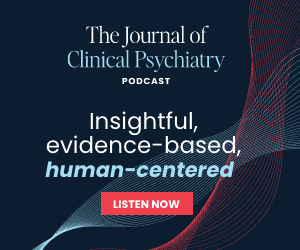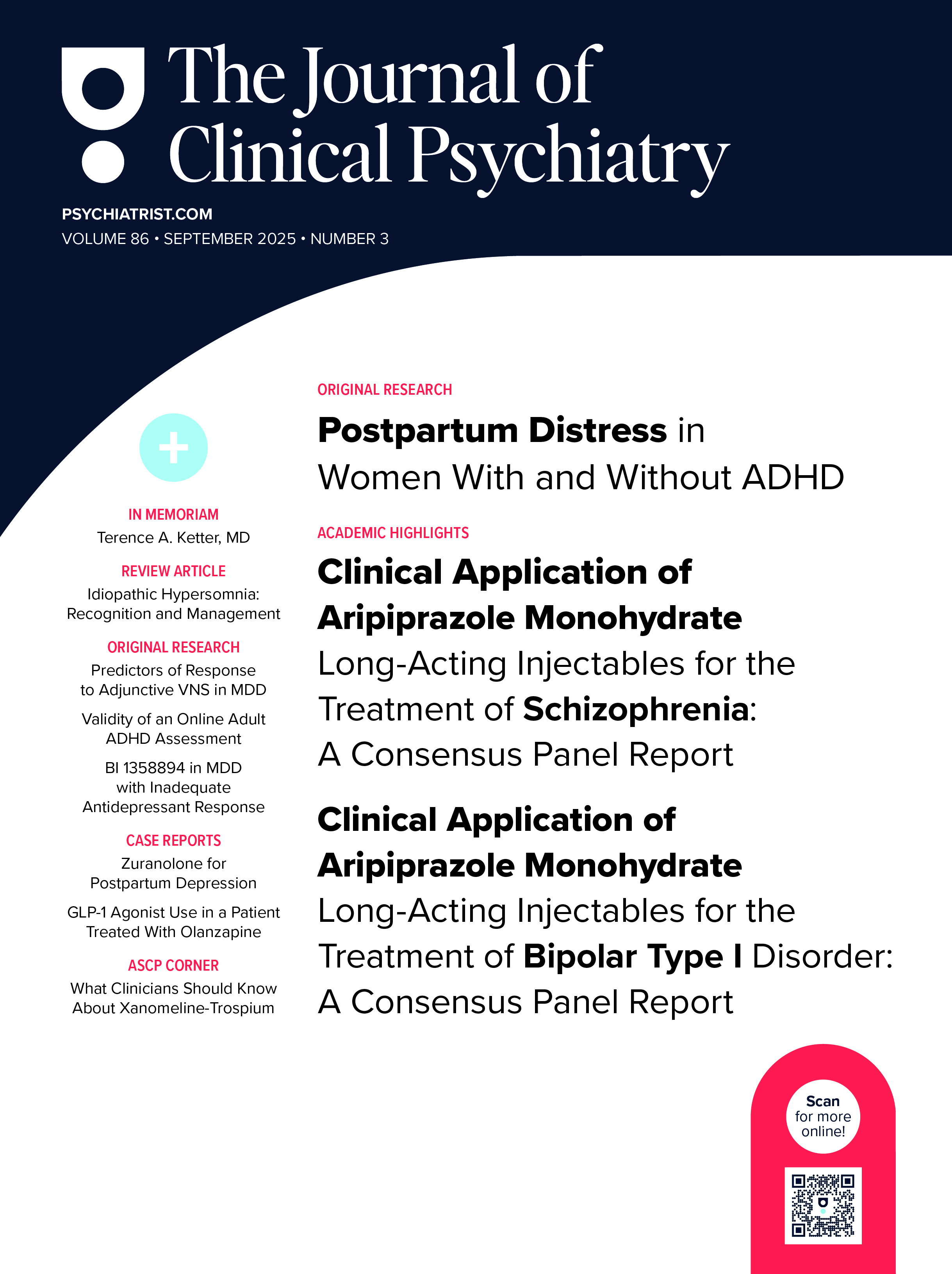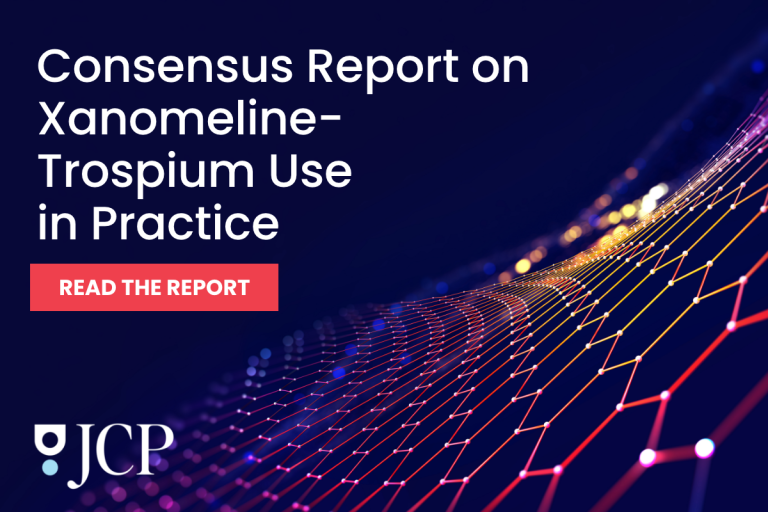
Abstract
Objective: Evidence-based psychotherapies (EBPs) have revolutionized posttraumatic stress disorder (PTSD) treatment, but research suggests more limited engagement and effectiveness in naturalistic settings, relative to randomized controlled trials. Some clinics therefore offer additional evidence-informed options (eg, Skills Training in Affective and Interpersonal Regulation, Acceptance and Commitment Therapy, and Mindfulness Based Stress Reduction), but little research has compared outcomes within a naturalistic setting.
Methods: We completed a retrospective chart review of 480 Veterans presenting to a trauma-focused clinic within a Veterans Affairs Medical Center during 2019. All variables were extracted from the VA medical record. We used logistic or linear regression models, χ2, and analysis of variance to examine treatment outcomes differences.
Results: In the year following intake, 71.87% (n = 345) engaged with treatment, and 45.42% (n = 218) received an adequate dose of at least 1 treatment; of those who engaged with treatment, 63.19% received an adequate dose of at least 1 treatment. Veterans attended an average of 8.40 sessions and 1.39 episodes of care. At the person level, rates of engagement and receipt of an adequate dose did not differ by treatment type (odds ratio [OR] = 1.52, P = .17; OR= 1.52, P = .17, respectively). However, those who planned to and/or received at least 1 EBP attended a significantly greater number of total sessions (11.82) relative to those that planned to and/or received evidence-informed psychotherapy (EIP; 7.31; b = 1.69, P = .04). Within episodes of care, rates of engagement did not differ by treatment type (OR = 1.39, P = .14). However, those who planned to and/or received EBP were more likely to receive an adequate dose of treatment (OR = 1.44, P = .04) and attended a significantly greater number of sessions per episode (7.60), relative to EIP (6.00).
Discussion: These data highlight differences in treatment engagement and receipt of an adequate dose of treatment based on intervention-level factors within an active PTSD specialty clinic, which can aid decision-making for patients and providers. Future research is needed to investigate predictors of treatment engagement and outcomes.
J Clin Psychiatry 2025;86(2):24m15567
Author affiliations are listed at the end of this article.
Members Only Content
This full article is available exclusively to Professional tier members. Subscribe now to unlock the HTML version and gain unlimited access to our entire library plus all PDFs. If you’re already a subscriber, please log in below to continue reading.
References (97)

- Kilpatrick DG, Resnick HS, Milanak ME, et al. National estimates of exposure to traumatic events and PTSD prevalence using DSM-IV and DSM-5 criteria. J Trauma Stress. 2013;26(5):537–547. PubMed CrossRef
- Koenen KC, Ratanatharathorn A, Ng L, et al. Posttraumatic stress disorder in the world mental health surveys. Psychol Med. 2017;47(13):2260–2274. PubMed CrossRef
- Ginzburg K, Ein-Dor T, Solomon Z. Comorbidity of posttraumatic stress disorder, anxiety and depression: a 20-year longitudinal study of war veterans. J Affect Disord. 2010;123(1-3):249–257. PubMed CrossRef
- Goldberg J, Magruder KM, Forsberg CW, et al. The association of PTSD with physical and mental health functioning and disability (VA Cooperative Study #569: the course and consequences of posttraumatic stress disorder in Vietnam-era Veteran twins). Qual Life Res. 2014;23(5):1579–1591. PubMed CrossRef
- Wisco BE, Marx BP, Wolf EJ, et al. Posttraumatic stress disorder in the US veteran population: results from the National Health and Resilience in Veterans Study. J Clin Psychiatry. 2014;75(12):1338–1346. PubMed CrossRef
- Arenson MB, McCaslin SE, Cohen BE. Predictors of multiple domains of functioning in veterans with posttraumatic stress disorder: results from the Mind Your Heart study. Depress Anxiety. 2019;36(11):1026–1035. PubMed CrossRef
- Fang SC, Schnurr PP, Kulish AL, et al. Psychosocial functioning and health-related quality of life associated with posttraumatic stress disorder in male and female Iraq and Afghanistan war veterans: the VALOR registry. J Womens Health. 2015;24(12):1038–1046. PubMed CrossRef
- Jackson CE, Ciarleglio MM, Aslan M, et al. Associations among increases in posttraumatic stress symptoms, neurocognitive performance, and long‐term functional outcomes in U.S. Iraq war veterans. J Trauma Stress. 2021;34(3):628–640. PubMed CrossRef
- Balayan K, Kahloon M, Tobia G, et al. The impact of posttraumatic stress disorder on the quality of life: a systematic review. Int Neuropsychiatr Dis J. 2014;2(5). PubMed
- Zatzick DF, Marmar CR, Weiss DS, et al. Posttraumatic stress disorder and functioning and quality of life outcomes in a nationally representative sample of male Vietnam veterans. Am J Psychiatry. 1997;154(12):1690–1695. PubMed CrossRef
- Arenson MB, Whooley MA, Neylan TC, et al. Posttraumatic stress disorder, depression, and suicidal ideation in veterans: results from the Mind Your Heart study. Psychiatry Res. 2018;265(0):224–230. PubMed CrossRef
- Zhang L, Hu XZ, Benedek DM, et al. The interaction between stressful life events and leukocyte telomere length is associated with PTSD. Mol Psychiatry. 2014;19(8):855–856. PubMed CrossRef
- Ramsawh HJ, Fullerton CS, Mash HBH, et al. Risk for suicidal behaviors associated with PTSD, depression, and their comorbidity in the U.S. Army. J Affect Disord. 2014;161:116–122. PubMed CrossRef
- Possemato K, Wade M, Andersen J, et al. The impact of PTSD, depression, and substance use disorders on disease burden and health care utilization among OEF/OIF veterans. Psychol Trauma. 2010;2(3):218–223. CrossRef
- Pacella ML, Hruska B, Delahanty DL. The physical health consequences of PTSD and PTSD symptoms: a meta-analytic review. J Anxiety Disord. 2013;27(1):33–46. PubMed CrossRef
- Hoge CW, Castro CA, Messer SC, et al. Combat duty in Iraq and Afghanistan, mental health problems, and barriers to care. N Engl J Med. 2004;351(1):13–22. PubMed CrossRef
- Davis LL, Schein J, Cloutier M, et al. The economic burden of posttraumatic stress disorder in the United States from a societal perspective. J Clin Psychiatry. 2022;83(3):21m14116. PubMed CrossRef
- Tanielian T, Jaycox LH, Adamson DM, et al. Invisible Wounds of War: Psychological and Cognitive Injuries, Their Consequences, and Services to Assist Recovery. RAND Corporation; 2008.
- Kessler RC. Posttraumatic stress disorder: the burden to the individual and to society. J Clin Psychiatry. 2000;61(Suppl 5):4–14. PubMed
- Lehavot K, Katon JG, Chen JA, et al. Post-traumatic stress disorder by gender and veteran status. Am J Prev Med. 2018;54(1):e1–e9. PubMed CrossRef
- Fulton JJ, Calhoun PS, Wagner HR, et al. The prevalence of posttraumatic stress disorder in Operation Enduring Freedom/Operation Iraqi Freedom (OEF/OIF) veterans: a meta-analysis. J Anxiety Disord. 2015;31:98–107. PubMed CrossRef
- Richardson LK, Frueh BC, Acierno R. Prevalence estimates of combat-related post-traumatic stress disorder: critical review. Aust N Z J Psychiatry. 2010;44(1):4–19. PubMed CrossRef
- Wisco BE, Nomamiukor FO, Marx BP, et al. Posttraumatic stress disorder in US military veterans: results from the 2019–2020 National Health and Resilience in Veterans Study. J Clin Psychiatry. 2022;83(2):20m14029. PubMed CrossRef
- Eisen SA, Griffith KH, Xian H, et al. Lifetime and 12-month prevalence of psychiatric disorders in 8,169 male Vietnam war era Veterans. Mil Med. 2004;169(11):896–902. PubMed CrossRef
- Schnurr PP, Lunney CA, Bovin MJ, et al. Posttraumatic stress disorder and quality of life: extension of findings to veterans of the wars in Iraq and Afghanistan. Clin Psychol Rev. 2009;29(8):727–735. PubMed CrossRef
- Weiss DS, Marmar CR, Schlenger WE, et al. The prevalence of lifetime and partial post-traumatic stress disorder in Vietnam theater veterans. J Trauma Stress. 1992;5(3):365–376. CrossRef
- Resick P, Monson C, Chard K. Cognitive Processing Therapy for PTSD. 2nd ed. The Guilford Press; 2024.
- Foa E, Hembree E, Rothbaum BO, et al. Prolonged Exposure Therapy for PTSD: Emotional Processing of Traumatic Experiences - Therapist Guide. 2nd ed. Oxford University Press; 2019. CrossRef
- Shapiro F. Eye Movement Desensitization and Reprocessing (EMDR) Therapy: Basic Principles, Protocols, and Procedures. The Guilford Press; 2018.
- Sloan DM, Marx BP. Written Exposure Therapy for PTSD: A Brief Treatment Approach for Mental Health Professionals. American Psychological Association; 2019.
- Department of Veterans Affairs, Department of Defense. VA/DOD Clinical Practice Guideline for the Management of Posttraumatic Stress Disorder and Acute Stress Disorder; 2023.
- American Psychological Association. Clinical Practice Guideline for the Treatment of Posttraumatic Stress Disorder (PTSD) in Adults. American Psychological Association; 2017. Accessed April 28, 2025. https://www.apa.org/ptsd-guideline/ptsd.pdf.
- Forbes D, Bisson JI, Monson CM, et al. Effective Treatments for PTSD: Practice Guidelines from the International Society for Traumatic Stress Studies. 3rd ed. The Guilford Press; 2020.
- Department of Veterans Affairs, Department of Defense. VA/DoD Clinical Practice Guideline for the Management of Posttraumatic Stress Disorder and Acute Stress Disorder. U.S. Government Printing Office; 2017. Accessed April 28, 2025. https://www.healthquality.va.gov/guidelines/MH/ptsd/VADoDPTSDCPGFinal.pdf.
- Schottenbauer MA, Glass CR, Arnkoff DB, et al. Nonresponse and dropout rates in outcome studies on PTSD: review and methodological considerations. Psychiatry. 2008;71(2):134–168. PubMed CrossRef
- Steenkamp MM, Litz BT, Marmar CR. First-line psychotherapies for military-related PTSD. J Am Med Assoc. 2020;323(7):656–657. PubMed CrossRef
- Lewis C, Roberts NP, Gibson S, et al. Dropout from psychological therapies for post-traumatic stress disorder (PTSD) in adults: systematic review and meta-analysis. Eur J Psychotraumatol. 2020;11(1):1709709. PubMed CrossRef
- Doran JM, DeViva J. A naturalistic evaluation of evidence-based treatment for veterans with PTSD. Traumatology. 2018;24(3):157–167. CrossRef
- Goetter EM, Bui E, Ojserkis RA, et al. A systematic review of dropout from psychotherapy for posttraumatic stress disorder among Iraq and Afghanistan combat veterans. J Trauma Stress. 2015;28(5):401–409. PubMed CrossRef
- Doran JM, Pietrzak RH, Hoff R, et al. Psychotherapy utilization and retention in a national sample of veterans with PTSD. J Clin Psychol. 2017;73(10):1259–1279. PubMed CrossRef
- Shea MT, Krupnick JL, Belsher BE, et al. Non-trauma-focused psychotherapies for the treatment of PTSD: a descriptive review. Curr Treat Options Psychiatry. 2020;7(3):242–257. CrossRef
- Cloitre M, Jackson C, Schmidt JA. Case reports: STAIR for strengthening social support and relationships among veterans with military sexual trauma and PTSD. Mil Med. 2016;181(2):e183–e187. PubMed CrossRef
- Cloitre M, Schmidt JA. STAIR narrative therapy. In: Evidence Based Treatments for Trauma-Related Psychological Disorders. Springer; 2015:277–297.
- Hayes SC, Strosahl KD, Wilson KG. Acceptance and Commitment T A Naturalistic Study of the Impact of Treatment Type on Engagement in Posttraumatic Stress Disorder herapy. Vol 6; 1999.
- Polusny MA, Erbes CR, Thuras P, et al. Mindfulness-based stress reduction for posttraumatic stress disorder among veterans a randomized clinical trial. JAMA J Am Med Assoc. 2015;314(5):456–465. PubMed CrossRef
- Jain S, Ortigo K, Gimeno J, et al. A randomized controlled trial of brief Skills Training in Affective and Interpersonal Regulation (STAIR) for veterans in primary care. J Trauma Stress. 2020;33(4):401–409. PubMed CrossRef
- Jackson C, Weiss BJ, Cloitre M. STAIR group treatment for veterans with PTSD: efficacy and impact of gender on outcome. Mil Med. 2019;184(1-2):E143–E147. PubMed CrossRef
- Rubenstein A, Duek O, Doran J, et al. To expose or not to expose: a comprehensive perspective on treatment for posttraumatic stress disorder. Am Psychol. 2024;79(3):331–343. PubMed CrossRef
- Washington DL, Davis TD, Der-Martirosian C, et al. PTSD risk and mental health care engagement in a multi-war era community sample of women veterans. J Gen Intern Med. 2013;28(7):894–900. PubMed CrossRef
- Schuler MS, Wong EC, Ramchand R. Military service branch differences in alcohol use, tobacco use, prescription drug misuse, and mental health conditions. Drug Alcohol Depend. 2022;235:109461. PubMed CrossRef
- Dedeaux JA, Lewis RK. Does the physical and mental health of veterans differ by military branch?. J Prev Interv Community. 2021;49(3):207–220. PubMed CrossRef
- Nichter B, Stein MB, Norman SB, et al. Prevalence, correlates, and treatment of suicidal behavior in US military veterans: results from the 2019-2020 National Health and Resilience in Veterans Study. J Clin Psychiatry. 2021;82(5):20m13714. PubMed CrossRef
- Baker DG, Heppner P, Afari N, et al. Trauma exposure, branch of service, and physical injury in relation to mental health among U.S. Veterans returning from Iraq and Afghanistan. Mil Med. 2009;174(8):773–778. PubMed
- Shields M, Thomas KH, Bernard C, et al. The Correlation Between Female Veteran Mental Health and Branch of Military Service. J Health Education Teaching. 2020;11(1):14–23.
- McGuffin JJ, Riggs SA, Raiche EM, et al. Military and Veteran help-seeking behaviors: role of mental health stigma and leadership. Mil Psychol. 2021;33(5):332–340. PubMed CrossRef
- Weathers FW, Blake DD, Kaloupek DG, et al. Life Events Checklist for DSM-5 (LEC-5). National Center for PTSD; 2013.
- Holder N, Shiner B, Li Y, et al. Determining the median effective dose of prolonged exposure therapy for veterans with posttraumatic stress disorder. Behav Res Ther. 2020;135:103756. PubMed CrossRef
- Holder N, Shiner B, Li Y, et al. Cognitive processing therapy for veterans with posttraumatic stress disorder: what is the median effective dose?. J Affect Disord. 2020;273:425–433. PubMed CrossRef
- Holmes SC, Johnson CM, Suvak MK, et al. Examining patterns of dose response for clients who do and do not complete cognitive processing therapy. J Anxiety Disord. 2019;68:102120. PubMed CrossRef
- Hundt NE, Harik JM, Thompson KE, et al. Increased utilization of prolonged exposure and cognitive processing therapy over time: a case example from a large veterans affairs posttraumatic stress disorder clinic. Psychol Serv. 2018;15(4):429–436. PubMed CrossRef
- Hale AC, Bohnert KM, Ganoczy D, et al. Predictors of treatment adequacy during evidence-based psychotherapy for PTSD. Psychiatr Serv. 2019;70(5):367–373. PubMed CrossRef
- Maguen S, Li Y, Madden E, et al. Factors associated with completing evidence-based psychotherapy for PTSD among veterans in a national healthcare system. Psychiatry Res. 2019;274:112–128. PubMed CrossRef
- Myers US, Haller M, Angkaw AC, et al. Evidence-based psychotherapy completion and symptom improvement among returning combat veterans with PTSD. Psychol Trauma. 2019;11(2):216–223. PubMed CrossRef
- Sripada RK, Ready DJ, Ganoczy D, et al. When to change the treatment plan: an analysis of diminishing returns in VA patients undergoing prolonged exposure and cognitive processing therapy. Behav Ther. 2020;51(1):85–98. PubMed CrossRef
- Shiner B, Westgate CL, Gui J, et al. Measurement strategies for evidence-based psychotherapy for posttraumatic stress disorder delivery: trends and associations with patient-reported outcomes. Adm Policy Ment Health. 2020;47(3):451–467. PubMed CrossRef
- Sayer NA, Wiltsey-Stirman S, Rosen CS, et al. Investigation of therapist effects on patient engagement in evidence-based psychotherapies for posttraumatic stress disorder in the Veterans Health Administration. J Trauma Stress. 2022;35(1):66–77. PubMed CrossRef
- Eftekhari A, Crowley JJ, Mackintosh MA, et al. Predicting treatment dropout among veterans receiving prolonged exposure therapy. Psychol Trauma. 2020;12(4):405–412. PubMed CrossRef
- Valenstein-Mah H, Kehle-Forbes S, Nelson D, et al. Gender differences in rates and predictors of individual psychotherapy initiation and completion among Veterans Health Administration users recently diagnosed with PTSD. Psychol Trauma. 2019;11(8):811–819. PubMed CrossRef
- Hundt NE, Ecker AH, Thompson K, et al. “It didn’t fit for me:” A qualitative examination of dropout from prolonged exposure and cognitive processing therapy in veterans. Psychol Serv. 2020;17(4):414–421. PubMed CrossRef
- Harper KL, Lee DJ, Moshier S, et al. Is adequate dose adequate? An examination of the impact of psychotherapy on posttraumatic stress disorder symptoms utilizing Veterans Health Administration medical records. Psychol Serv. 2025;22(1):167–176. PubMed CrossRef
- Seal KH, Maguen S, Cohen B, et al. VA mental health services utilization in Iraq and Afghanistan veterans in the first year of receiving new mental health diagnoses. J Trauma Stress. 2010;23(1):5–16. PubMed CrossRef
- Kehle-Forbes SM, Meis LA, Spoont MR, et al. Treatment initiation and dropout from prolonged exposure and cognitive processing therapy in a VA outpatient clinic. Psychol Trauma. 2016;8(1):107–114. PubMed CrossRef
- Kehle-Forbes SM, Ackland PE, Spoont MR, et al. Divergent experiences of U.S. veterans who did and did not complete trauma-focused therapies for PTSD: a national qualitative study of treatment dropout. Behav Res Ther. 2022;154:104123. PubMed CrossRef
- Varker T, Jones KA, Arjmand HA, et al. Dropout from guideline-recommended psychological treatments for posttraumatic stress disorder: a systematic review and meta-analysis. J Affect Disord Rep. 2021;4.
- Steenkamp MM, Litz BT, Hoge CW, et al. Psychotherapy for military-related PTSD: a review of randomized clinical trials. JAMA, J Am Med Assoc. 2015;314(5):489–500. PubMed CrossRef
- Edwards-Stewart A, Smolenski DJ, Bush NE, et al. Posttraumatic stress disorder treatment dropout among military and veteran populations: a systematic review and meta-analysis. J Trauma Stress. 2021;34(4):808–818. PubMed CrossRef
- Schnurr PP, Chard KM, Ruzek JI, et al. Comparison of prolonged exposure vs cognitive processing therapy for treatment of posttraumatic stress disorder among US veterans: a randomized clinical trial. JAMA Netw Open. 2022;5(1):e2136921–e2136921. PubMed CrossRef
- Shea MT, Krupnick JL, Sautter FJ, et al. A randomized clinical trial comparing Interpersonal Psychotherapy with Prolonged Exposure for the treatment of PTSD in veterans. J Anxiety Disord. 2023;99:102770. PubMed CrossRef
- Hundt NE, Helm A, Smith TL, et al. Failure to engage: a qualitative study of veterans who decline evidence-based psychotherapies for PTSD. Psychol Serv. 2018;15(4):536–542. PubMed CrossRef
- Sciarrino NA, Bartlett BA, Smith LJ, et al. Factors contributing to PTSD treatment dropout in veterans returning from the wars in Iraq and Afghanistan: a systematic review. Psychol Serv. 2022;19(1):183–200. PubMed CrossRef
- Wells SY, Morland LA, Hurst S, et al. Veterans’ reasons for dropping out of prolonged exposure therapy across three delivery modalities: a qualitative examination. Psychol Serv. 2023;20(3):483–495. PubMed CrossRef
- Szafranski DD, Smith BN, Gros DF, et al. High rates of PTSD treatment dropout: a possible red herring?. J Anxiety Disord. 2017;47:91–98. PubMed CrossRef
- Belsher BE, Beech E, Evatt D, et al. Present-centered therapy (PCT) for post-traumatic stress disorder (PTSD) in adults. Cochrane Database Syst Rev. 2019;2019(11).
- Schwartze D, Barkowski S, Strauss B, et al. Efficacy of group psychotherapy for posttraumatic stress disorder: systematic review and meta-analysis of randomized controlled trials. Psychother Res. 2019;29(4):415–431. PubMed CrossRef
- Finley EP, Garcia HA, Ramirez VA, et al. Treatment selection among posttraumatic stress disorder (PTSD) specialty care providers in the veterans health administration: a thematic analysis. Psychol Trauma. 2020;12(3):251–259. PubMed CrossRef
- Sripada RK, Bohnert KM, Ganoczy D, et al. Initial group versus individual therapy for posttraumatic stress disorder and subsequent follow-up treatment adequacy. Psychol Serv. 2016;13(4):349–355. PubMed CrossRef
- Yalom ID, Leszcz M. The Theory and Practice of Group Psychotherapy. 6th ed. Basic Books; 2020.
- Resnick SG, Oehlert ME, Hoff RA, et al. Measurement-based care and psychological assessment: using measurement to enhance psychological treatment. Psychol Serv. 2020;17(3):233–237. PubMed CrossRef
- Boswell JF, Hepner KA, Lysell K, et al. The need for a measurement-based care professional practice guideline. Psychotherapy. 2023;60(1):1–16. PubMed CrossRef
- Lewis CC, Boyd M, Puspitasari A, et al. Implementing measurement-based care in behavioral health: a review. JAMA Psychiatry. 2019;76(3):324–335. PubMed CrossRef
- Beck JG, Clapp JD, Unger W, et al. Moderators of PTSD symptom change in group cognitive behavioral therapy and group present centered therapy. J Anxiety Disord. 2021;80(January):102386. PubMed CrossRef
- Hoeboer CM, de Kleine RA, Oprel DAC, et al. Does complex PTSD predict or moderate treatment outcomes of three variants of exposure therapy?. J Anxiety Disord. 2021;80(January):102388. PubMed CrossRef
- Marx BP, Thompson-Hollands J, Lee DJ, et al. Estimated intelligence moderates cognitive processing therapy outcome for posttraumatic stress symptoms. Behav Ther. 2021;52(1):162–169. PubMed CrossRef
- Markowitz JC, Petkova E, Neria Y, et al. Is exposure necessary? A randomized clinical trial of interpersonal psychotherapy for PTSD. Am J Psychiatry. 2015;172(5):430–440. PubMed CrossRef
- Cloitre M, Petkova E, Su Z, et al. Patient characteristics as a moderator of posttraumatic stress disorder treatment outcome: combining symptom burden and strengths. BJPsych Open. 2016;2(2):101–106. PubMed CrossRef
- Goetter EM, Iaccarino MA, Tanev KS, et al. Telemental health uptake in an outpatient clinic for veterans during the COVID-19 pandemic and assessment of patient and provider attitudes. Prof Psychol Res Pr. 2022;53(2):151–159. CrossRef
- McLean CP, Back SE, Capone C, et al. The impact of COVID-19 on psychotherapy participation among individuals with posttraumatic stress disorder enrolled in treatment research. J Trauma Stress. 2022;35(1):308–313. PubMed CrossRef





